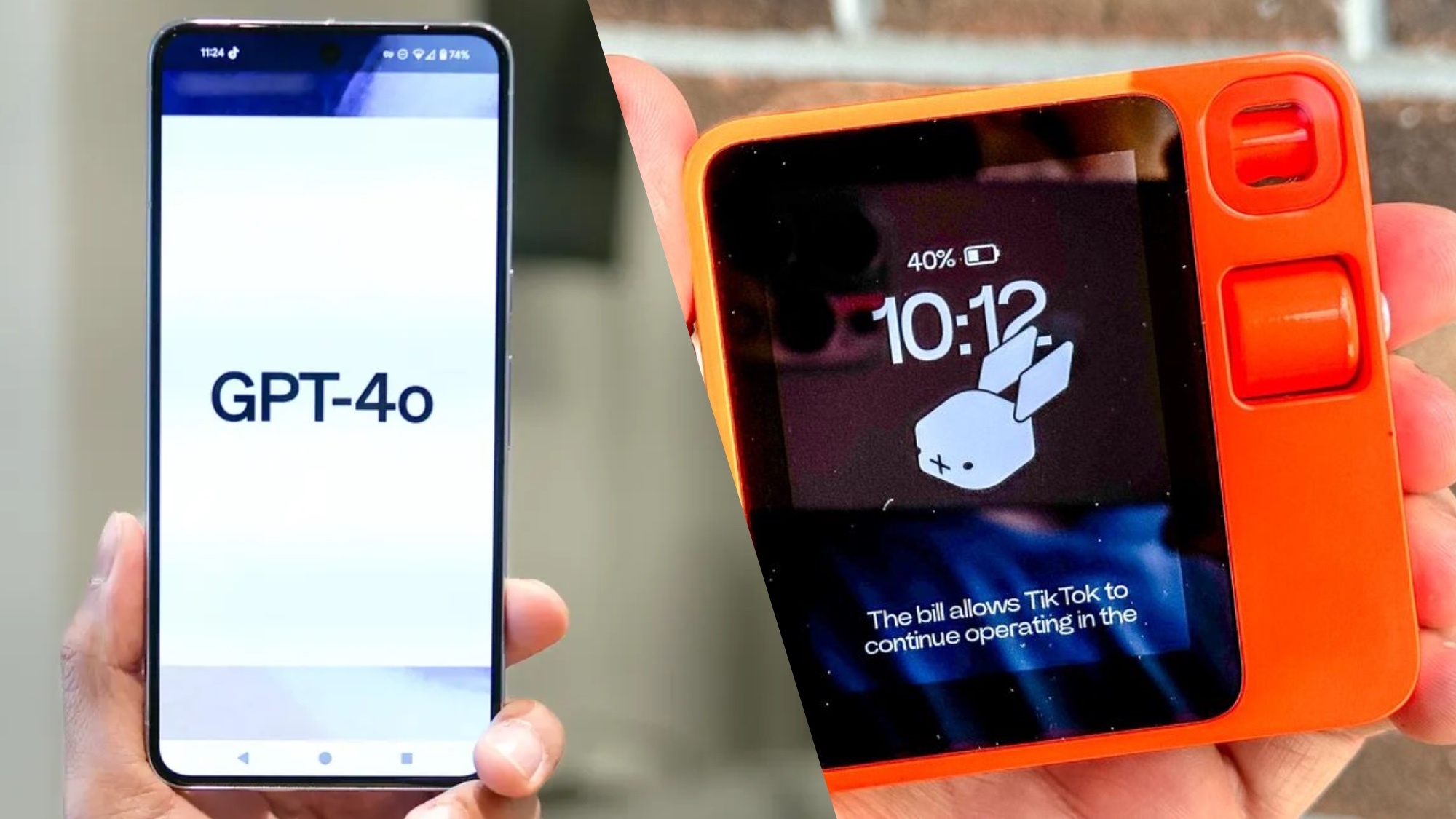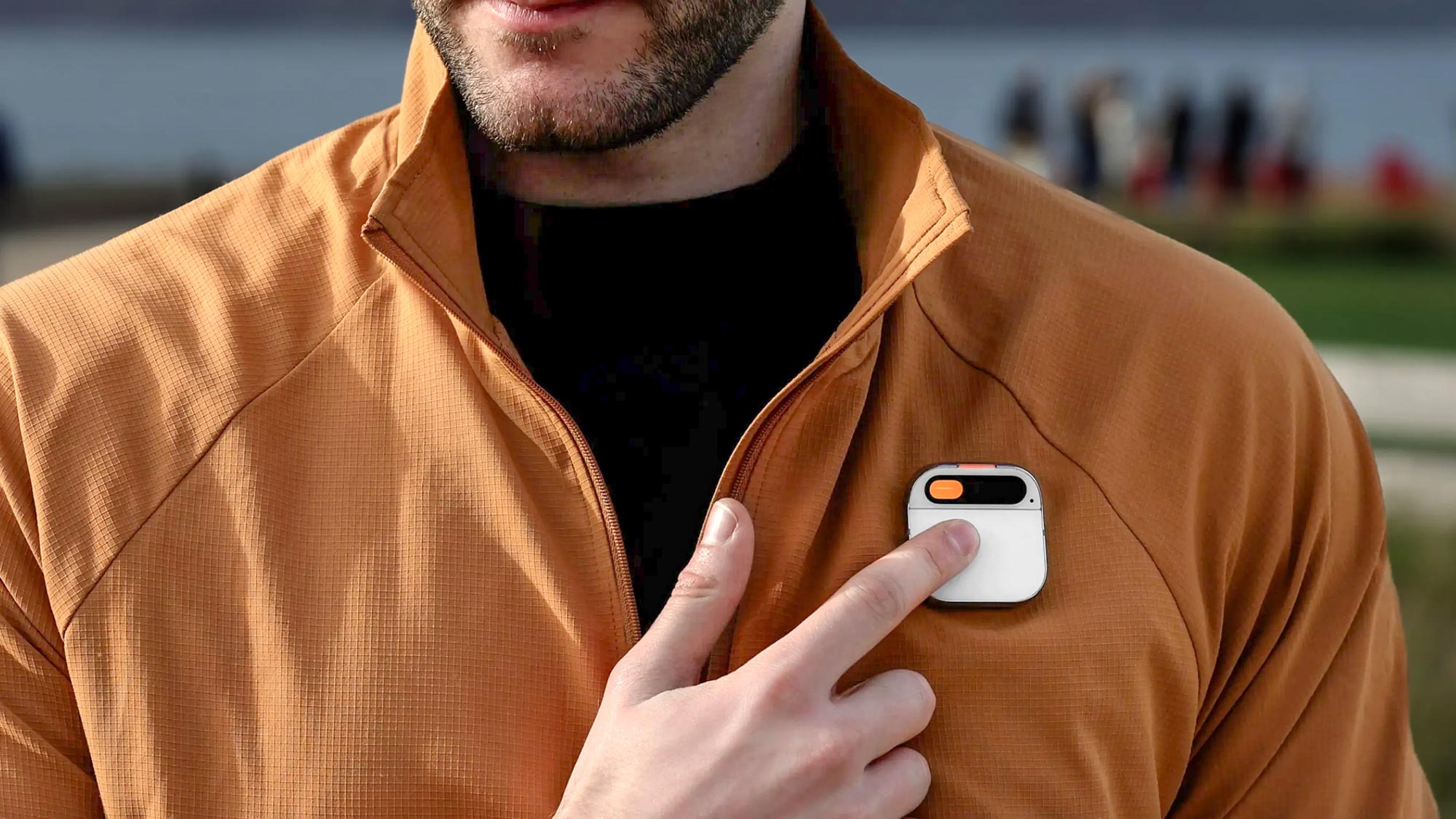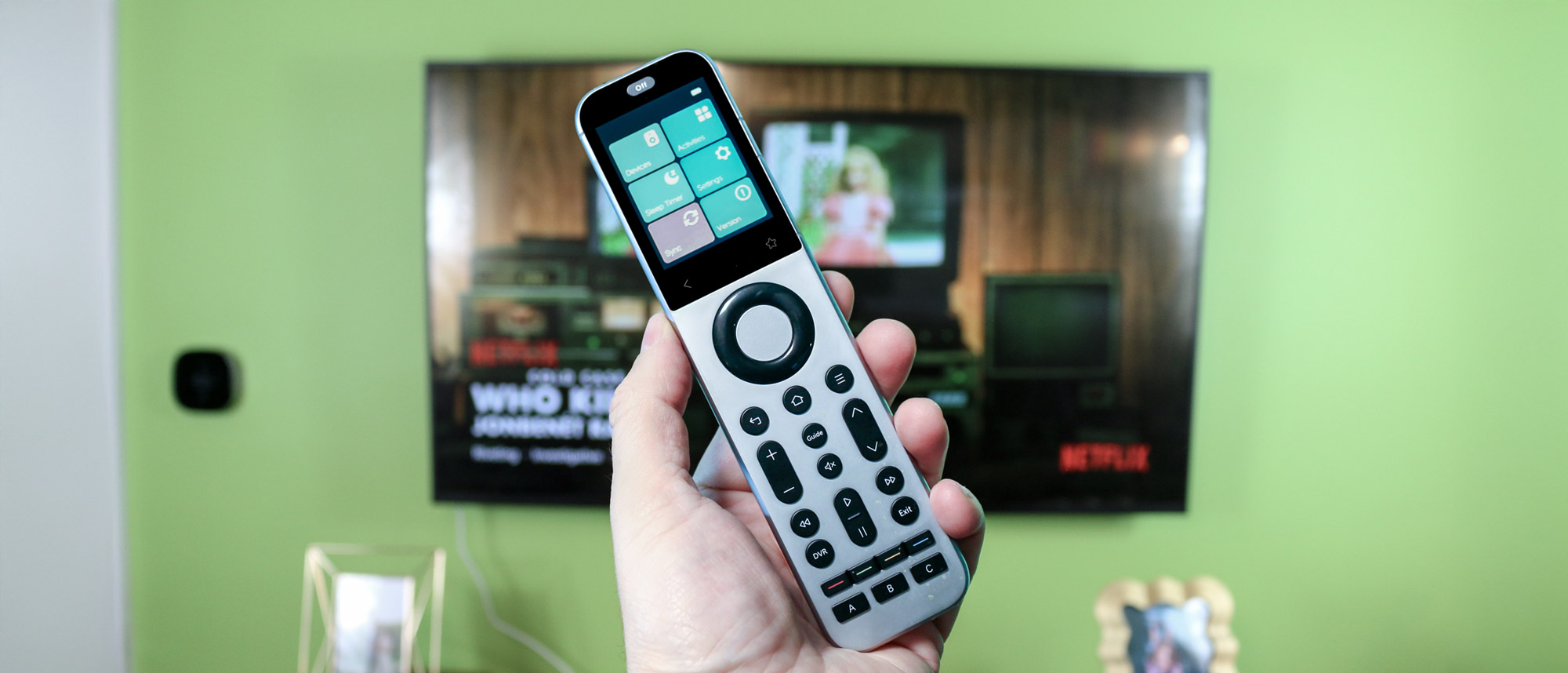GPT-4o might just be the savior AI that could rescue hardware firms like Rabbit and Humane — here's why
Can they make a good second first impression?

Things are moving so quickly in the AI space that an entire category can have a boom-and-bust lifecycle of a few weeks. That seems to have been the case for AI-dedicated hardware devices like the Rabbit r1 or the Humane Pin — but do they have a savior on the horizon?
One of the biggest issues with these devices was latency. It simply took too long to get a reasonable response back to a query to make it usable. We forgave this in a free app or in one that cost a few dollars — but not in a standalone device costing hundreds.
As a result, both devices were subjected to near-universal criticism and terrible reviews from across the tech media spectrum but I’ve always thought their biggest issue was being early.
Some of the latency issues could be solved with caching but the big problem was that the vision models were just too slow. With the new GPT-4o from OpenAI and even Google’s Gemini Flash reprieve may be possible — that is if they can make a good second first impression.
Why is GPT-4o so useful for AI hardware?
GPT-4o is trained to be multimodal in and out from the start. This means it has significantly better vision capabilities, as well as an understanding of speech, video and text. It is also effectively a new model, trained from scratch using GPT-4 as a guide so it is faster.
George Kedenburg III, product design lead for Humane took to X to say they've already seen a noticeable improvement in testing with GPT-4o compared to previous generations.
For example, there has been a 14% decrease in latency, 28% shorter answers and 33% fewer bad answers. "Beyond the numbers, everything just feels smarter and more accurate," he wrote.
Get instant access to breaking news, the hottest reviews, great deals and helpful tips.
You can see all of this if you try GPT-4o in ChatGPT. It is significantly quicker at responding, less verbose and seems more capable compared to earlier versions.
Rabbit CEO Jesse Lyu, founder of Rabbit said they're also moving to GPT-4o, declaring that: "The game is not killing each other, it's everyone working on the same foundations. once the foundations are solid, the building on top of it will be much different."
Isn’t AI hardware a silly gimmick?

While AI-dedicated hardware might seem like a gimmick, especially now we know the r1 is just an Android app, I think its an early indicator of how we’ll access knowledge in the future.
This puts me at odds with Tom’s Guide’s Jason England, who proudly declares that “the best way to use this assistant is on that device that’s already in your pocket — a smartphone.”
He’s not wrong. The smartphone is a great way to interact with smart assistants like ChatGPT Voice, Gemini Live or whatever Apple rolls out at WWDC — but it's a stop-gap.
What we saw with the OpenAI Spring Update is a shift towards a more hands-off AI future in the way we use technology. A focus on voice and vision over text input, with AI able to understand us and the world we inhabit providing a link to ease our communication with technology.
Paper made it easier to get ideas down — no more chisels and stone — and typewriters made that process easier still. The microprocessor put computers in every home and smartphones put them in every hand. Access to technology gets simpler and more abstract with each generation.
But surely its too late for Rabbit and Humane?

I have previously said that my ideal form factor for interacting with AI is a pair of smart glasses, ideally with a film coating to provide a display — but audio like the Meta Ray-Bans is fine.
I want a working Star Trek-inspired communicator so am REALLY hoping they manage to work out the many issues, including heat and latency.
What Humane and Rabbit have is a process, workflow and system that makes engaging with AI easier — at least behind the scenes.
They both have serious issues in terms of the way you interact with them. The scroll wheel and button on the Rabbit would be better replaced with improved voice as both make it cumbersome and people using the Pin's projector say it is more trouble than it is worth — that should also focus on voice responses.
If you combine the processes they've developed for engaging with information and the idea of moving away from typing as a concept with a more intelligent AI model like GPT-4o — then you start to see some green shoots for AI hardware.
The issue for both companies is making that second first impression. Launching with all the issues of poor latency, inaccuracies and problems with response styles left a bad impression and overcoming that will be a struggle. But I don’t think we should count the concept out.
Ray-Ban Meta Smart Glasses: $299 @ Amazon These smart glasses are a camera, bluetooth headphones, and stylish designed sunglasses all in one. Read our Ray-Ban Meta Smart Glasses review for more info.
While the Rabbit r1 might seem pointless on the surface, especially as everything can be replicated on a smartphone, it could have a great future as a device for kids. A way for them to find information quickly without relying on a smartphone and its many other apps.
For the Humane Pin — I want a working Star Trek-inspired communicator so am REALLY hoping they manage to work out the many issues, including heat and latency. Combined with the voice capabilities of GPT-4o and its live translation — this could come back to life.
But I’m a technology optimist and don’t think there will be “one device to rule them all”. My view is that people will want different form factors that are comfortable for them. For some, it will always be a smartphone-like device, for others a simple pin on their shirt.
More from Tom's Guide
- OpenAI and Reddit announce deal to bring ‘timely and relevant information’ to ChatGPT
- Gemini Live — what features are available now and what is coming soon
- Look out, Snapdragon — Nvidia, MediaTek may team up to make chips for AI laptops

Ryan Morrison, a stalwart in the realm of tech journalism, possesses a sterling track record that spans over two decades, though he'd much rather let his insightful articles on AI and technology speak for him than engage in this self-aggrandising exercise. As the former AI Editor for Tom's Guide, Ryan wields his vast industry experience with a mix of scepticism and enthusiasm, unpacking the complexities of AI in a way that could almost make you forget about the impending robot takeover.
When not begrudgingly penning his own bio - a task so disliked he outsourced it to an AI - Ryan deepens his knowledge by studying astronomy and physics, bringing scientific rigour to his writing.











